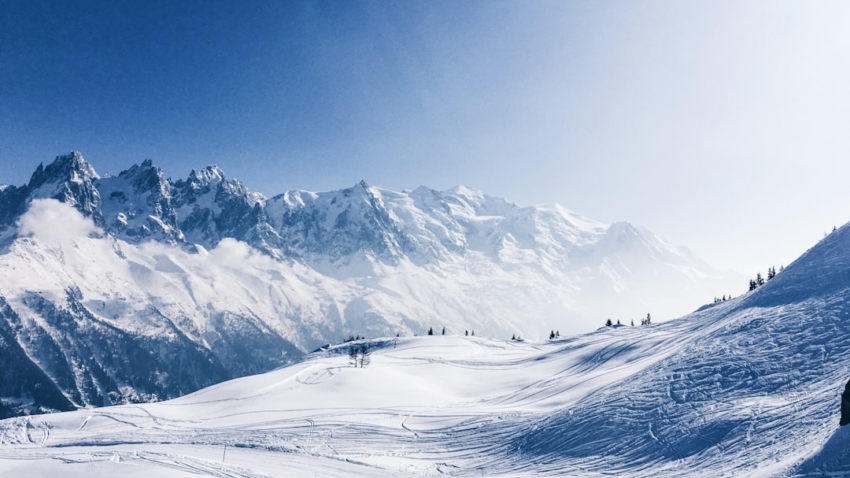
Does Australia Experience Snow?
Australia is a country known for its diverse climate, ranging from tropical in the north to temperate in the south. The continent experiences a wide range of weather patterns, including extreme heat, drought, and occasional snowfall. While many people may not associate Australia with snow, it does in fact receive snowfall in certain regions during the winter months. The unique climate of Australia makes it an interesting and diverse destination for travelers and outdoor enthusiasts alike.
The country’s climate is influenced by a variety of factors, including its size, location, and topography. The northern part of Australia experiences a tropical climate, with hot and humid conditions, while the southern part of the country has a more temperate climate, with cooler temperatures and more variable weather patterns. The central part of Australia is characterized by arid and semi-arid conditions, with very little precipitation. In the winter months, the southern regions of Australia experience cooler temperatures, which can lead to snowfall in certain areas. This unique climate makes Australia a fascinating place to explore and experience a wide range of weather conditions.
Key Takeaways
- Australia’s climate varies greatly from region to region, with snowfall occurring in certain areas during the winter months.
- The geography of snow in Australia is primarily found in the mountainous regions of the southeast and Tasmania, with some snowfall occurring in the Australian Alps and the Snowy Mountains.
- Snowfall in Australia’s regions is a key contributor to water supply, as the melting snow provides essential water for rivers and reservoirs.
- The impact of snow in Australia includes economic benefits from winter tourism, as well as challenges such as road closures and hazardous conditions.
- Activities and tourism in Australian snow regions include skiing, snowboarding, and other winter sports, as well as sightseeing and accommodation options for visitors.
- Climate change is affecting snowfall in Australia, with reduced snow cover and shorter snow seasons impacting the environment and winter tourism.
- In conclusion, Australia’s relationship with snow is complex, with both positive and negative impacts on the environment, economy, and tourism industry.
The Geography of Snow in Australia
Snow in Australia is primarily found in the mountainous regions of the southeast, including the Australian Alps and the Snowy Mountains. These areas are located in the states of New South Wales and Victoria, and are home to some of the country’s most popular ski resorts and snowfields. The geography of these regions is characterized by high elevations and rugged terrain, which creates ideal conditions for snowfall during the winter months.
The Australian Alps, also known as the Great Dividing Range, are a series of mountain ranges that run along the southeastern coast of Australia. This area is home to some of the highest peaks in the country, including Mount Kosciuszko, which is the highest mountain in Australia. The Snowy Mountains are also located in this region and are known for their stunning alpine landscapes and abundant snowfall during the winter months. The geography of these areas makes them popular destinations for skiing, snowboarding, and other winter sports activities.
Snowfall in Australia’s Regions
Snowfall in Australia is most common during the winter months, typically from June to August. The southeastern regions of the country, including the Australian Alps and the Snowy Mountains, receive the most consistent snowfall each year. These areas can receive significant snowfall, with some areas averaging over 3 meters of snow each winter. The snowfall in these regions creates ideal conditions for winter sports and outdoor activities, making them popular destinations for both locals and tourists.
In addition to the southeastern regions, Tasmania also experiences snowfall during the winter months. The island state is located to the south of the mainland and has a cooler climate, which can lead to snowfall in the higher elevations. The central plateau of Tasmania is particularly prone to snowfall during the winter months, making it a popular destination for winter sports enthusiasts. While snowfall in other parts of Australia is rare, it has been known to occur in other mountainous regions and high-altitude areas during particularly cold weather systems.
The Impact of Snow in Australia
| Year | Snowfall (cm) | Impact |
|---|---|---|
| 2015 | 100 | Disruption to transport and power outages |
| 2016 | 80 | Increased tourism and winter sports activities |
| 2017 | 120 | Damage to crops and livestock |
| 2018 | 90 | Challenges for wildlife and ecosystems |
The snowfall in Australia has a significant impact on the environment, economy, and culture of the country. In environmental terms, snowfall contributes to the water supply in many parts of Australia. The snowmelt from the mountains provides essential water resources for agriculture, industry, and urban areas during the drier months. Additionally, the snowfall contributes to the overall biodiversity of these regions, providing habitat for unique alpine flora and fauna.
Economically, snowfall in Australia supports a thriving winter sports industry. Ski resorts and snowfields in the southeastern regions attract thousands of visitors each year, contributing to local economies and tourism. The winter sports industry provides employment opportunities and stimulates economic growth in these regions. Snowfall also has cultural significance for many Australians, as it provides opportunities for outdoor recreation and social activities during the winter months.
Activities and Tourism in Australian Snow Regions
The snow regions of Australia offer a wide range of activities and attractions for visitors to enjoy during the winter months. Skiing and snowboarding are popular activities in the Australian Alps and Snowy Mountains, with numerous ski resorts and snowfields offering opportunities for all skill levels. These regions also provide opportunities for cross-country skiing, snowshoeing, and snowmobiling, allowing visitors to explore the stunning alpine landscapes.
In addition to winter sports, the snow regions of Australia offer a variety of other attractions and activities. Visitors can enjoy scenic chairlift rides, tobogganing, and snow tubing at many resorts. The alpine villages in these regions provide charming accommodations, dining options, and shopping experiences for visitors to enjoy. The natural beauty of these areas also makes them popular destinations for photography, nature walks, and wildlife viewing.
Climate Change and Snowfall in Australia

Climate change has had a noticeable impact on snowfall patterns in Australia in recent years. Rising temperatures and changing weather patterns have led to decreased snowfall and shorter winter seasons in some areas. This has had implications for the winter sports industry and local economies that rely on snow tourism. Additionally, reduced snowfall can have environmental consequences, affecting water resources and biodiversity in these regions.
Efforts are being made to mitigate the impact of climate change on snowfall in Australia. Sustainable practices and environmental initiatives are being implemented at ski resorts and snowfields to reduce their carbon footprint and promote conservation efforts. Research and monitoring programs are also being conducted to better understand the effects of climate change on snowfall patterns and develop strategies for adaptation.
Australia’s Relationship with Snow
Australia’s relationship with snow is a unique aspect of its diverse climate and geography. While many people may not associate Australia with snowfall, it does play a significant role in certain regions during the winter months. The snow regions of Australia offer a wide range of activities and attractions for visitors to enjoy, contributing to local economies and tourism. However, climate change poses challenges for snowfall patterns in these regions, highlighting the need for sustainable practices and environmental initiatives to protect this valuable natural resource. Despite these challenges, Australia’s relationship with snow remains an important part of its cultural identity and natural heritage.
If you’re curious about whether Australia gets snow, you might be interested in reading about the top ski resorts in the country. Check out this article on tigerping.com to learn about the best places to hit the slopes in Australia and experience the winter wonderland that the country has to offer.
FAQs
Does Australia get snow?
Yes, Australia does get snow in certain regions during the winter months.
Where does it snow in Australia?
Snowfall is most common in the Australian Alps, including areas such as the Snowy Mountains in New South Wales and the Victorian Alps in Victoria.
When does it snow in Australia?
Snowfall in Australia typically occurs during the winter months, from June to August, with the peak snow season usually in July.
How much snow does Australia get?
The amount of snowfall in Australia varies from year to year, but the average snow depth in the alpine regions can range from 1 to 2 meters.
Can you ski in Australia?
Yes, Australia has several ski resorts in the alpine regions where visitors can ski and snowboard during the winter season.
What is the climate like in the Australian Alps?
The climate in the Australian Alps is generally cold and snowy during the winter, with temperatures often dropping below freezing.












Leave a Reply
You must be logged in to post a comment.